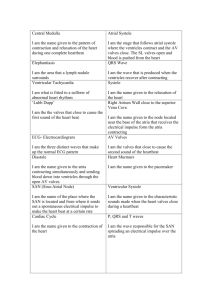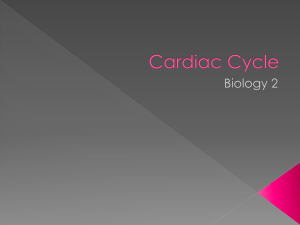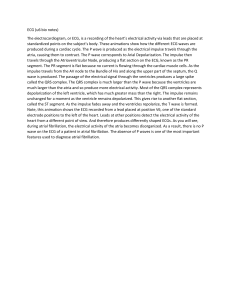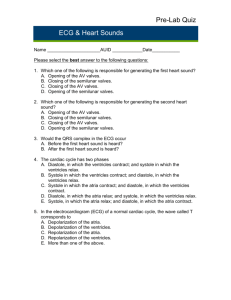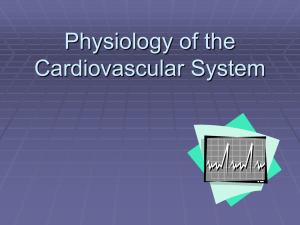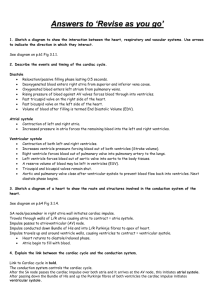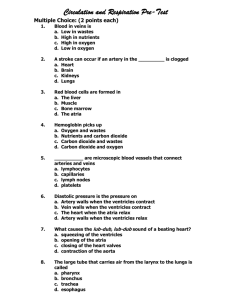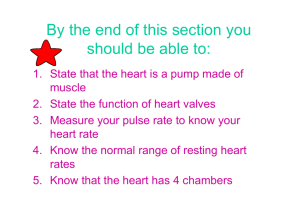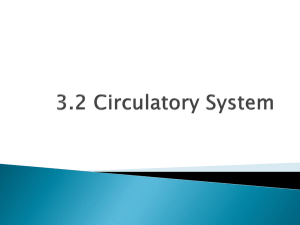Chapter 20 Revision Questions
advertisement
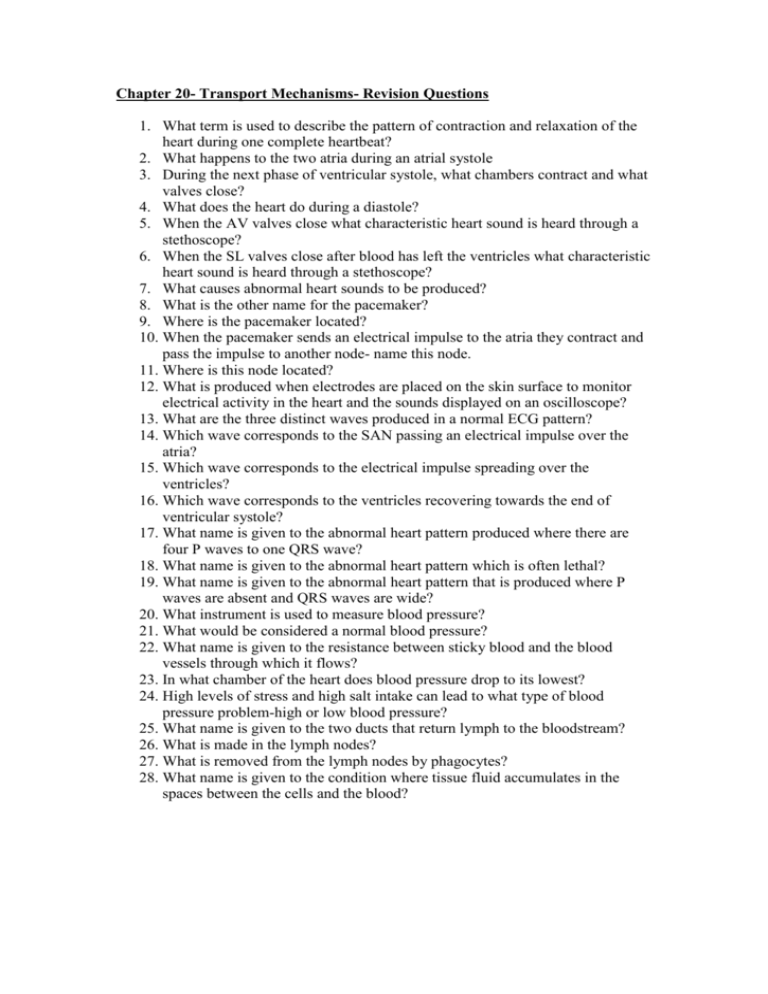
Chapter 20- Transport Mechanisms- Revision Questions 1. What term is used to describe the pattern of contraction and relaxation of the heart during one complete heartbeat? 2. What happens to the two atria during an atrial systole 3. During the next phase of ventricular systole, what chambers contract and what valves close? 4. What does the heart do during a diastole? 5. When the AV valves close what characteristic heart sound is heard through a stethoscope? 6. When the SL valves close after blood has left the ventricles what characteristic heart sound is heard through a stethoscope? 7. What causes abnormal heart sounds to be produced? 8. What is the other name for the pacemaker? 9. Where is the pacemaker located? 10. When the pacemaker sends an electrical impulse to the atria they contract and pass the impulse to another node- name this node. 11. Where is this node located? 12. What is produced when electrodes are placed on the skin surface to monitor electrical activity in the heart and the sounds displayed on an oscilloscope? 13. What are the three distinct waves produced in a normal ECG pattern? 14. Which wave corresponds to the SAN passing an electrical impulse over the atria? 15. Which wave corresponds to the electrical impulse spreading over the ventricles? 16. Which wave corresponds to the ventricles recovering towards the end of ventricular systole? 17. What name is given to the abnormal heart pattern produced where there are four P waves to one QRS wave? 18. What name is given to the abnormal heart pattern which is often lethal? 19. What name is given to the abnormal heart pattern that is produced where P waves are absent and QRS waves are wide? 20. What instrument is used to measure blood pressure? 21. What would be considered a normal blood pressure? 22. What name is given to the resistance between sticky blood and the blood vessels through which it flows? 23. In what chamber of the heart does blood pressure drop to its lowest? 24. High levels of stress and high salt intake can lead to what type of blood pressure problem-high or low blood pressure? 25. What name is given to the two ducts that return lymph to the bloodstream? 26. What is made in the lymph nodes? 27. What is removed from the lymph nodes by phagocytes? 28. What name is given to the condition where tissue fluid accumulates in the spaces between the cells and the blood?
